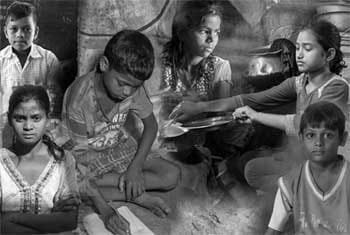– Amitabh Kant –
 India is making an attempt to transition to a digital payment, less cash economy. Given that only a meagre percentage of our population pays taxes, the nation’s economy also grows as more and more transactions come under banking and taxation system through digital payments. Besides, corruption in public life and governance is oiled by cash, so as we move towards a less-cash society, this anonymity which a corrupt entity enjoys by using cash goes away. Moreover, cash printing and its distribution is extremely expensive.
India is making an attempt to transition to a digital payment, less cash economy. Given that only a meagre percentage of our population pays taxes, the nation’s economy also grows as more and more transactions come under banking and taxation system through digital payments. Besides, corruption in public life and governance is oiled by cash, so as we move towards a less-cash society, this anonymity which a corrupt entity enjoys by using cash goes away. Moreover, cash printing and its distribution is extremely expensive.
Individual consumers also have several benefits in going less-cash. All value of transactions, from Re. 1 to any amount, can be done digitally without carrying cash. And we can do digital transactions 24 hours even on holidays. Besides, the government has announced several incentives on digital payments which make it really cheaper as compared to cash payments for the same service.
It is not just western economies that have significant ratio of digital economy, African countries such as Kenya and Nigeria have achieved much higher adoption of digital payments even as their population is semi-literate. M-Pesa transactions account for 67% of total number of transactions under Kenya’s National Payment System. Many reports conclude that such a high rate of mobile banking has also led to increased access to financial services, reduced transaction costs and improved savings, especially by Kenyan women. India must learn from these success stories and use their experience as the India also has large young population and high mobile penetration.
Multiple initiatives
Several incentives have been announced for consumers such as discounts in fuel purchase, insurance premiums, service tax waivers and cashbacks. Revamped modes of digital payments, which are very secure, fast and customer friendly, have been launched such as BHIM app and new USSD. Large scale awareness campaigns have been launched, especially DigiDhan Melas in 100 cities, for education and handholding of public to adopt digital payments.
Several incentives and programs have been rolled out for merchants as well. Banks have been mandated to install 1 million new PoS terminals by this fiscal. Duties and taxes have been waived off on manufacture of these machines. MDR and other transaction charges on digital payments are in the process of being rationalized and soon a new regime of transaction charges will be put in place which will be based on high volume and low charges. Special care is being taken of small and rural merchants where SBI has proposed zero transaction/MDR charges on such terminals. Multiple banks are hoped to follow soon.
Solution for everyone
Given the enormous heterogeneity of India’s population and hence, government has evolved different options for different segments. Although there are more than 1 billion mobile subscriptions in the country, only 3rd of that (~370 million) use mobile internet. BHIM (UPI) and e-wallets cater to digital payments need of this segment using a smartphone (~220 million users). USSD, which can work on any mobile phone with GSM network without the need of internet, covers around 61% of population which uses only simple feature phones. Apart from these phone based solutions, we have ~78 crore debits cards in the country and ~1 billion Aadhar numbers (~40 crore bank accounts have already been seeded with Aadhaar). AEPS and PoS solutions cater to these users, with or without mobile phones, who have Aadhaar seeded bank accounts and debit/credit/prepaid cards respectively. For closer handholding to senior citizens and illiterate people, we have Banking Correspondent model which cover our rural areas where a Banking Correspondent helps in extending financial services.
BHIM app and Aadhaar Pay
Bharat Interface for Money (BHIM) is an app that lets you make easy and quick payment transactions using UPI. It’s easier than wallets! You will not have to fill-out those tedious bank account details. You can easily make direct bank to bank payments and instantly collect money using just Mobile number or Payment address. This app has been launched by NPCI, the umbrella organisation for all retail payments in the country. Over 10 million BHIM App have been downloaded in last 10 days.
Aadhaar Pay is a model for merchant acceptance based on AEPS. By only installing an app on the phone and attaching a fingerprint scanner, merchants can start accepting payments from all Aadhaar seeded accounts. No card or mobile phone or PoS machine is required. Only the Aadhaar number and thumb impression is sufficient to generate and authenticate the transaction. This will enable India to achieve technological leapfrogging. My view is that by 2020 Indians will make cards and ATM’s totally redundant.
Revamped USSD
USSD is a telecom channel which lets you directly communicate from your simple phone with your bank for various transactions. It does not require internet connection. It is as easy as checking your prepaid phone balance. *99# is the standard channel which is used for communicating with all banks.
In the revamped USSD, the base layer of USSD has been integrated with UPI platform. So, now any feature phone (which is unable to install BHIM app) can also transfer or accept money from any smartphone (linked with a bank account) using BHIM app. This feature enhances the inter-operability of USSD and UPI platforms to make transactions.
Security concerns and consumer redress
Government has already formed a committee to oversee security issues in digital payments. A separate Digital Payments Division has been formed in India Computer Emergency Response Team (CERT-In). Security audit of all NPCI systems has been started to gauge needed improvements.
All the transactions done digitally are covered under Consumer Protection Act. But even before approaching the consumer forum, it is advised to approach the concerned bank for any disputes. As all digital transactions leave a record of it, it is very easy for banks to establish the veracity of such disputed transactions. Even then if the bank is not able to resolve the dispute, RBI’s institution of Banking Ombudsman can be approached by all citizens which mandates the resolution by the bank in a definite timeframe.
_______________
Amitabh Kant
Author is CEO, NITI Aayog (National Institution for Transforming India) Government of India.
Disclaimer : The views expressed by the author in this feature are entirely his own and do not necessarily reflect the views of INVC NEWS.















